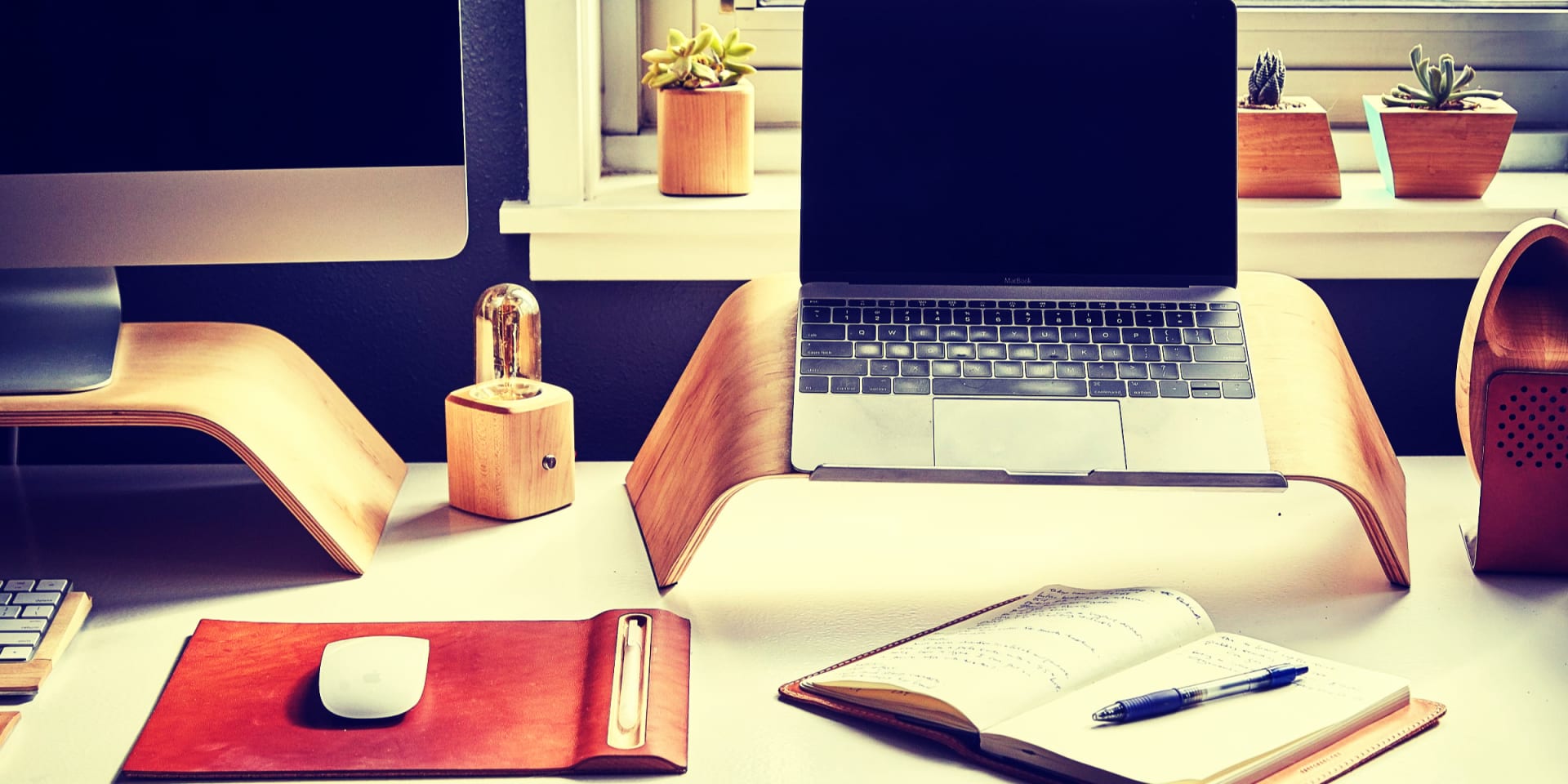Are you tired of your laptop overheating and slowing down during important tasks? A laptop cooling pad may be the solution you need. But, does a laptop cooling pad really improve performance?
In this article, we will explore the effectiveness of laptop cooling pads and provide tips for maximizing your laptop’s performance.
First, let’s understand the causes of overheating in laptops. When you use your laptop for extended periods of time, the internal components generate heat. If the heat is not dissipated properly, it can cause the laptop to slow down or even shut down. This is why many laptops have built-in fans and heat sinks.
However, sometimes these components are not enough to keep your laptop cool, especially if you are running demanding applications or playing games. This is where a laptop cooling pad comes in handy.
Table of Contents
Understanding the Causes of Overheating in Laptops
You might be wondering why your laptop gets so hot, but don’t worry, we’ve got you covered – let’s dive into the causes of overheating in laptops.
One of the main causes of laptop overheating is the accumulation of dust and debris in the cooling system. When air cannot flow smoothly through the cooling system, it causes the fan to work harder, which leads to more heat being generated.
Another cause of overheating is the high-performance demands of modern software. Many laptops aren’t designed to handle high-performance tasks, such as video editing or gaming, which can cause the processor to overwork and generate more heat. Similarly, running multiple programs at once can also cause overheating as the processor struggles to keep up with the demands.
Lastly, the age of your laptop can also be a contributing factor to overheating. Over time, the thermal paste that helps transfer heat away from the processor can dry out, which makes it harder for the heat to dissipate. Additionally, the fan may start to wear out and not work as efficiently as it did when the laptop was new.
These factors can cause the laptop to overheat even when performing simple tasks like browsing the internet.
How Laptop Cooling Pads Work
If you’re looking to keep your laptop running smoothly, a cooling pad might be just what you need. These pads come in a variety of types, from basic models that simply help to dissipate heat to more advanced options with built-in fans.
Using a cooling pad can help to improve your laptop’s performance and extend its lifespan, making it a worthwhile investment for any serious computer user.
Types of Cooling Pads
When browsing for a laptop cooling pad, you’ll come across two main types: active and passive. Active cooling pads come with built-in fans that circulate air and cool down your laptop. They are powered by USB ports and require electricity to operate.
On the other hand, passive cooling pads are made of materials that absorb and dissipate heat, without the need for any external power source. So, which one should you choose?
Here are three factors to consider: 1) If your laptop tends to overheat frequently or you use it for demanding tasks, such as gaming or video editing, an active cooling pad may be the better choice. 2) If you prefer a quieter environment and don’t want to deal with the noise of a fan, a passive cooling pad may be more suitable. 3) If you’re looking for a budget-friendly option, a passive cooling pad is usually cheaper than an active one.
Ultimately, the choice depends on your individual needs and preferences.
Benefits of Using a Cooling Pad
Using a cooling pad can enhance your laptop’s lifespan and prevent it from overheating, which can cause damage to internal components. Overheating is one of the most common causes of laptop breakdowns and can lead to costly repairs.
A cooling pad helps to keep the laptop’s temperature within the safe operating range, thereby prolonging its lifespan and preventing damage to the internal components.
Apart from extending your laptop’s lifespan, using a cooling pad also improves its performance. When a laptop overheats, its performance slows down as the processor and other components struggle to function properly. This can lead to sluggishness and poor performance, especially when running demanding applications.
With a cooling pad, your laptop can maintain optimal performance even when running resource-intensive tasks, making it a must-have accessory for anyone who wants to get the most out of their laptop.
Research on the Effectiveness of Cooling Pads
Research shows that laptop cooling pads can effectively reduce the temperature of a laptop, potentially improving its performance. One study conducted by a team of researchers from the University of California, Riverside found that using a cooling pad reduced the average temperature of a laptop by 6 degrees Celsius. This decrease in temperature led to a 20% increase in the laptop’s processing power, making it run faster and smoother.
In addition to improving performance, using a cooling pad can also extend the lifespan of your laptop. When a laptop overheats, it can cause damage to the internal components, leading to decreased performance and even permanent damage. By using a cooling pad, you can prevent your laptop from overheating and potentially save yourself from costly repairs or having to replace your device altogether.
While using a cooling pad may not be necessary for all laptops, it can be especially beneficial for those that are used for demanding tasks such as gaming or video editing. If you’re looking to improve the performance of your laptop and extend its lifespan, investing in a cooling pad may be a wise choice. Check out the table below for a quick comparison of some popular laptop cooling pads on the market.
| Cooling Pad | Number of Fans | Fan Speed | Size Compatibility | Price Range |
|---|---|---|---|---|
| Havit HV-F2056 | 3 | 1100 RPM | 15.6-17 inches | $20-30 |
| Kootek Cooler Pad Chill Mat 5 | 4 | 1200 RPM | 12-17 inches | $20-35 |
| TopMate C5 | 5 | 2500 RPM | 10-15.6 inches | $30-40 |
| TECKNET Laptop Cooling Pad | 2 | 1200 RPM | 12-16 inches | $20-25 |
| Cooler Master NotePal X3 | 1 | 1500 RPM | 15-19 inches | $30-40 |
Factors to Consider When Choosing a Cooling Pad
To choose the right cooling pad for you, consider factors such as your laptop size, the number and speed of fans, and your budget. Here are some things to keep in mind when making your decision:
-
Size: Cooling pads come in different sizes, so make sure to choose one that fits your laptop. If you have a 15-inch laptop, for example, you’ll want a cooling pad that’s designed for that size.
-
Number and speed of fans: The more fans a cooling pad has, the more air it can circulate around your laptop to keep it cool. Look for a cooling pad with at least two fans, and check the speed of the fans to make sure they’re powerful enough to do the job.
-
Noise level: Some cooling pads can be quite loud, which can be annoying if you’re trying to work or watch a movie. Look for a cooling pad that’s designed to be quiet, or at least has adjustable fan speed settings so you can control the noise level.
-
Price: Cooling pads can range in price from under $20 to over $100. Decide how much you’re willing to spend, and look for a cooling pad that fits your budget.
By considering these factors, you can choose a cooling pad that will work well for your laptop and your needs. Remember to do your research and read reviews before making a purchase, so you can be sure you’re getting a high-quality product that will last.
Alternative Methods for Cooling Your Laptop
If you’re looking for alternative methods for cooling your laptop, there are a few things you can do to keep it running smoothly.
Firstly, clean out any dust and debris from the fans and vents to improve airflow and prevent overheating.
Secondly, adjust your power settings to reduce the amount of heat generated by your laptop.
Lastly, elevate your laptop with a stand or prop it up with books to improve airflow and keep it cool.
Cleaning Dust and Debris
Removing accumulated dust and debris from your laptop’s cooling system can significantly improve its performance, so make sure to clean it regularly. Over time, dust and debris can clog the air vents and fans, preventing proper airflow and causing your laptop to overheat. This can lead to decreased performance, slower processing speeds, and even hardware damage.
To clean your laptop’s cooling system, first, turn off the power and unplug it from any power source. Then, use a can of compressed air to blow out any dust and debris from the air vents and fans. You can also use a soft-bristled brush to gently remove any stubborn debris.
Remember to be gentle and avoid using any liquids, as this can cause damage to your laptop. By keeping your laptop’s cooling system clean, you can ensure optimal performance and prevent any potential damage to your device.
Adjusting Power Settings
You can easily increase your laptop’s battery life and speed by adjusting its power settings. By default, most laptops come with power settings that aren’t optimized for performance, but you can change these settings to suit your needs.
Firstly, you can adjust the power plan settings to maximize performance. This will ensure that your laptop uses more power, but it’ll also improve its performance.
Secondly, you can adjust the display settings to reduce the brightness of your screen. This will not only conserve battery life, but it’ll also reduce the amount of heat generated by your laptop.
By adjusting these power settings, you can ensure that your laptop runs more efficiently, which’ll ultimately improve its overall performance.
Elevating Your Laptop
To make your laptop run smoother and prevent overheating, try using a simple household item as a makeshift stand. Elevating your laptop can significantly improve its performance, and it doesn’t have to cost a penny.
Here are three reasons why you should try elevating your laptop:
-
Improved airflow: When your laptop sits flat on a surface, its vents and fans can become blocked, restricting airflow and causing it to overheat. Elevating your laptop allows air to circulate freely, keeping it cool and preventing damage to its components.
-
Better ergonomics: Using a laptop for extended periods can cause strain on your neck, back, and wrists. Raising your laptop to eye level can help reduce these issues, allowing you to work or play for longer periods without discomfort.
-
Increased stability: A laptop that wobbles or slides around on a desk can be frustrating and distracting. Elevating your laptop with a stand or even just a few books can help keep it steady and in place, allowing you to focus on your tasks at hand.
Overall, elevating your laptop is a simple and effective way to improve its performance and prolong its lifespan. Give it a try and see the difference it can make.
Tips for Maximizing Laptop Performance
One way to get the most out of your laptop is by regularly cleaning its vents and fans. Overheating can significantly impact performance, so proper air flow is key. Dust and debris can accumulate over time, blocking air flow and causing your laptop to work harder to stay cool. This can result in slower performance and even damage to your device.
Another tip for maximizing laptop performance is to close any unnecessary programs or tabs. Running multiple programs at once can use up valuable resources and slow down your laptop. Additionally, consider uninstalling any programs that you don’t use anymore. This can free up space on your hard drive, giving your laptop more room to work efficiently.
Lastly, consider upgrading your laptop’s hardware if it’s older or struggling to keep up with your needs. Adding more RAM or a solid-state drive can significantly improve performance. However, before making any upgrades, be sure to research compatibility with your specific laptop model and seek professional assistance if necessary.
By following these tips, you can ensure that your laptop is running at its best and getting the most out of its capabilities.
Conclusion
So, does a laptop cooling pad improve performance? Yes, it can. By reducing the temperature of your laptop, a cooling pad can prevent thermal throttling and improve overall performance. However, it’s important to choose the right cooling pad for your specific laptop and usage needs. Consider factors such as size, fan speed, and noise level before making a purchase.
If a cooling pad isn’t an option for you, there are other methods for keeping your laptop cool. You can clean the vents, use compressed air to remove dust, and elevate your laptop to improve airflow. By taking steps to keep your laptop cool, you can maximize its performance and extend its lifespan.



